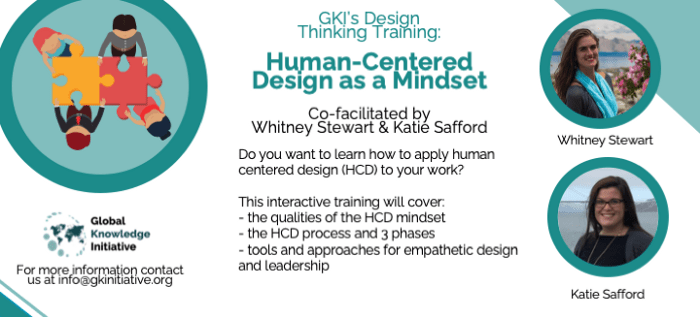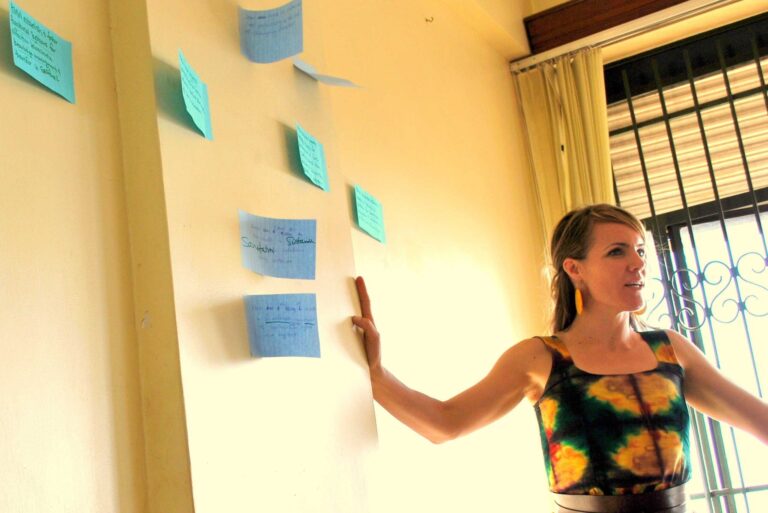GKI’s Design Thinking Training: Human Centered Design as a Mindset
Design thinking, paired with a Systems Perspective, is a critical component of the Global Knowledge Initiative (GKI)’s approach to addressing development challenges. Today, two members of GKI’s team — Whitney Stewart and Katie Safford — offered a training on “Human Centered Design as a Mindset” at USAID’s Youth Power2: Learning and Evaluation Symposium, where we explored the connection between human centered design and the work that USAID is championing in the Positive Youth Development space.
At GKI, we think of a training as more than just transferring a set of tools and activities or developing a specific skill set. It’s about holding space for an experience that encourages people to come together to better understand themselves, open up to different points of view and new ideas, and connect diverse approaches and methods to create innovative solutions that resonate with the lived and collective experience of impact champions and change-makers in any working context.
In this 55-minute session, we explored how Human Centered Design can offer an innovative way to not only practice systems change, but also embody a mindset that embeds empathy and collaboration into everything that we do as designers, facilitators, and leaders. We believe that anyone is capable of disrupting the systems we live within. It’s this capability — to deeply connect with the needs, incentives, and challenges of other stakeholders in the system — that is the key to how the HCD mindset can foster a human-centered, stakeholder-led, systems change.
We also walked through the three phases of HCD:
- Inspiration is about working to better understand people. During this phase we observe lives, hear desires, connect with root causes, and get curious about finding the opportunities embedded within challenges.
- Ideation is when we make sense of everything that we collectively heard and observed, generate ideas, identify opportunities for design, and test and refine solutions.
- Implementation is when we bring solutions to life and start testing different ideas (and the components of those ideas) more rigorously. Once we have defined the solution, we can determine how to bring those ideas into reality and how to maximize our impact in the world.

To download our presentation from the introductory session and to explore some of the tools that we played with, please click here.
This quick introductory training is just the tip of the iceberg of a 3-hour course that we teach around Human Centered Design in Systems Change, which digs deeper into both the mindset and the process for practicing HCD within complex systems. See our flyer below for more information, or click here to download a copy to share with your network.
If you’d like to learn more or explore how human-centered systems design could impact your work, please reach out to us at info@gkinitiative.org, connect with us on LinkedIn, or follow us on twitter. We hope to hear from you soon!







